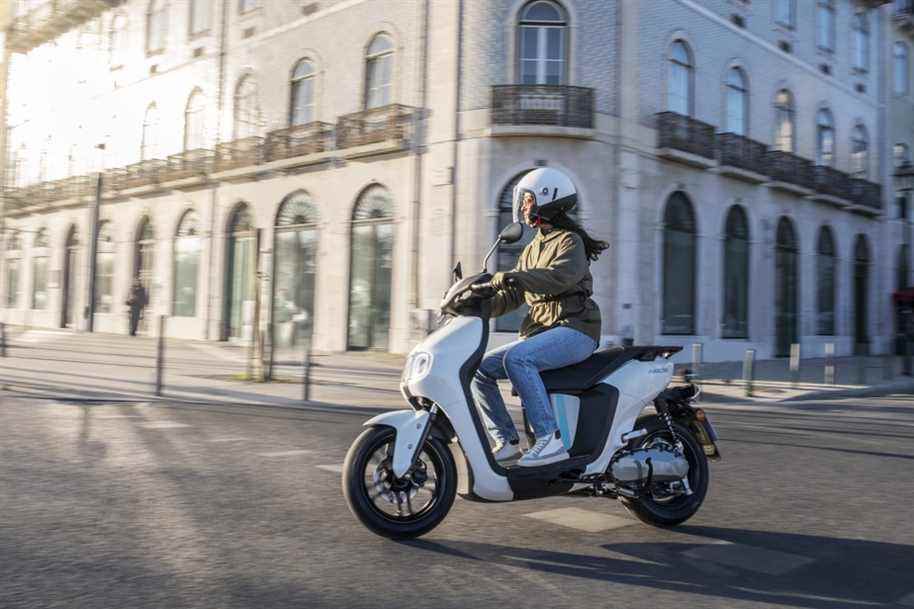Posted at 11:45 a.m.
Kawasaki
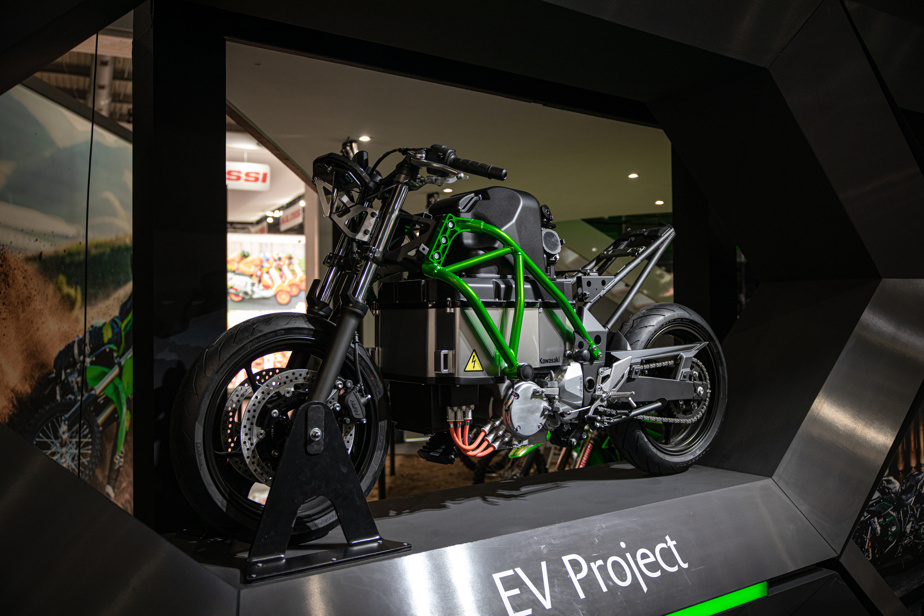
PHOTO MARCELLO MANNONI, SUPPLIED BY KAWASAKI
Kawasaki’s EV Project
Although Kawasaki hasn’t made a big splash so far when it comes to electrification, it’s now one of the brands with the clearest plans. The manufacturer was already experimenting openly with traditional motorcycles transformed to accommodate an electric motorization as well as with pure prototypes of electric motorcycles, but it had not officially announced anything in terms of production models. Kawasaki now reveals that it will unveil three electric models as early as 2022, 10 production electric models will be announced in 2025, and every model in its lineup will have either an electric or hybrid option from 2035.
LiveWire

PHOTO BUDDY WILINSKI, SUPPLIED BY HARLEY-DAVIDSON
The Harley-Davidson LiveWire
After a decade of development, the Harley-Davidson LiveWire reached the production stage with great fanfare in 2020. At the end of 2021, to everyone’s surprise, Harley-Davidson CEO Jochen Zeitz announced that LiveWire would become the name of the a new brand whose mission will be to “establish itself as the manufacturer of the most desirable and avant-garde electric motorcycles in the world”. Since then, the original Harley-Davidson LiveWire has been renamed LiveWire One. It is only on sale in the United States at the moment, where its price has been lowered from around US$30,000 to US$22,000. A second LiveWire model smaller and cheaper than the One is expected in 2022.
Honda
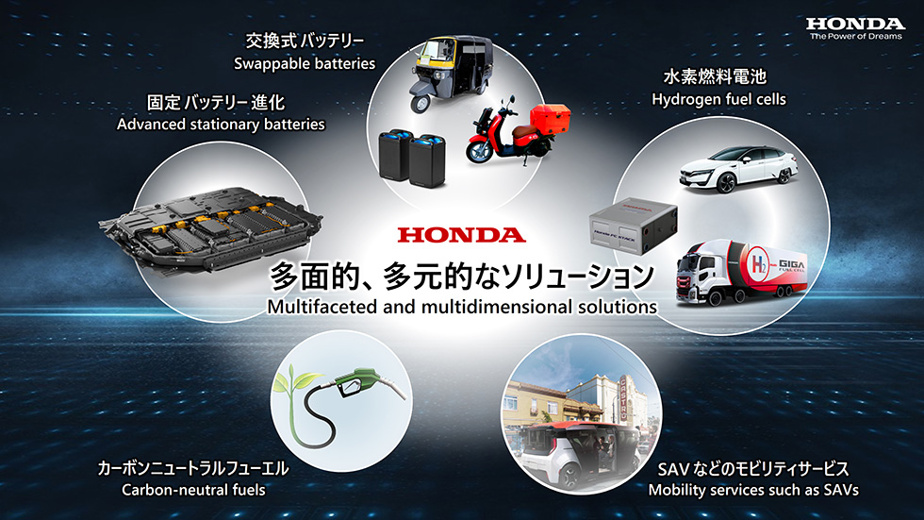
PHOTO PROVIDED BY HONDA
Overview of Honda’s plans
Honda recently unveiled its long-term plans for electrification. Its strategy spans several decades and will profoundly transform the structure of the brand. Among other things, Honda says that the old automobile, motorcycle and motorized products groups will now make way for new divisions: electrified products, batteries, energy, mobile energy blocks, hydrogen and programming. The technology developed by each new division will then be used by the various product groups. A few electrified models are expected in 2024 on the automotive side, but nothing has been disclosed on the motorcycle side. Remember that an agreement was reached in 2021 between Honda, KTM, Piaggio and Yamaha on the format of an interchangeable motorcycle battery.
Can Am

PHOTO PROVIDED BY BRP
Can-Am’s four electric models
The recent announcement of an entire range of Can-Am electric motorcycles available from mid-2024 represents a very important development for the Quebec brand, which will celebrate its 50th anniversary in 2023. The anniversary will also be marked by an announcement official and more detailed novelties. At this time, the information released by Can-Am is very limited. They point to a family of four electric models, some of which would have an urban mission and others would have the ability to drive off-road. Remember that BRP had promised last year that each of its product families would eventually offer an electric option. It seems that Can-Am motorcycles are the first of these products.
Yamaha
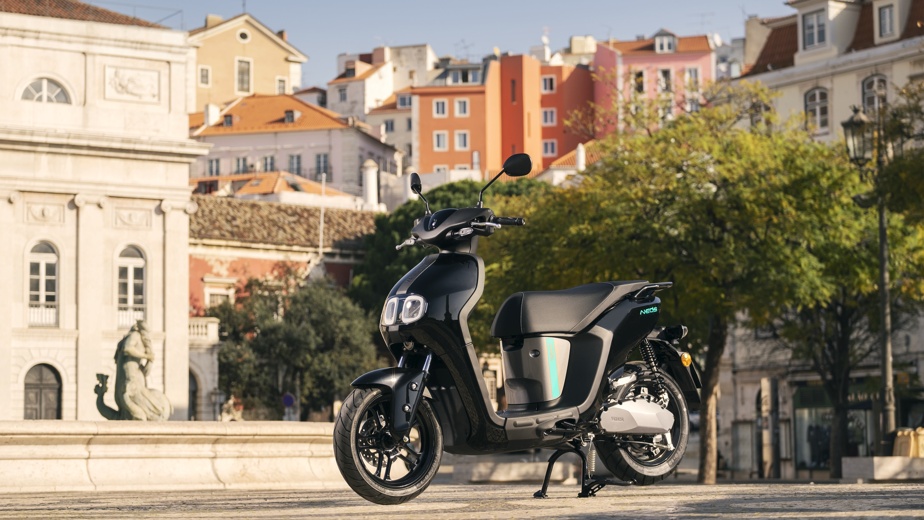
PHOTO MARCO CAMPELLI, SUPPLIED BY YAMAHA
Yamaha’s NEO’s
After many electric concepts presented for years, Yamaha finally reaches the production stage in 2022 with a small scooter named NEO’s. Strictly designed to evolve in an urban environment, it reaches a top speed of 40 km/h and offers a range of 37 km. The NEO’s is distinguished by a battery housed under the saddle and which can be removed from the vehicle, as well as by the possibility of adding a second battery in order to increase the autonomy. The Japanese brand is also offering an E01 scooter in 2022 powered by a more powerful fixed battery. At this time, none of these models are available in North America.
Triumph

PHOTO PROVIDED BY TRIUMPH
The electric concept named TE1, from Triumph
If Triumph has not yet announced a timetable or a precise plan for electrification, the manufacturer has still been working for a few years on an electric concept called TE1. Taking the form of a standard, it is a kind of laboratory for the English brand which worked together with Williams Advanced Engineering in order to achieve a compact and dynamic frame that can compete with a gasoline-powered motorcycle of format similar. In early 2022, Triumph announced that the design phase was complete and on-road calibration testing began. However, the manufacturer does not indicate whether the goal is to put the TE1 into production.
BMW

PHOTO PROVIDED BY BMW
The playful design of the CE 02 concept, from BMW
The Munich manufacturer is currently one of the most advanced major motorcycle brands when it comes to electrified tourers. One of the most interesting advantages of BMW is the research and development of its automotive subsidiary, since the technology generated can then be transferred quite easily to two wheels. BMW also sees the electrification of the motorcycle as a great opportunity to reinvent its image, a fact well illustrated by the playful design of the CE 02 concept. Indeed, the manufacturer considers that the great flexibility of an electrical architecture offers a rare opportunity to give free rein to creativity, which he intends to use to attract, he hopes, a younger clientele.
KTM
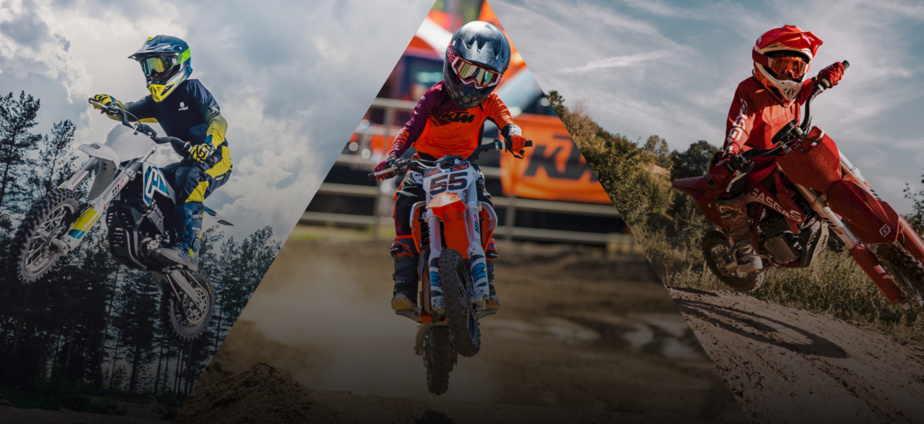
PHOTO PROVIDED BY KTM
The Junior e-Motocross series
Unlike the majority of major manufacturers, the Austrian brand KTM approaches the electrification of the motorcycle in an extremely down to earth way. The manufacturer openly expresses its skepticism towards large-format models and reiterates its belief in small formats, with concrete gestures in support. As with rival brands, projects are underway, including an E-Duke and an E-Pilen with 5.5 kWh battery and similar in format to that of a 300 c touring car.3. But where KTM stands out is in its dedication to the Junior e-Motocross series enabling very young children – the professional racers of tomorrow – to compete in electric-only competitions.
